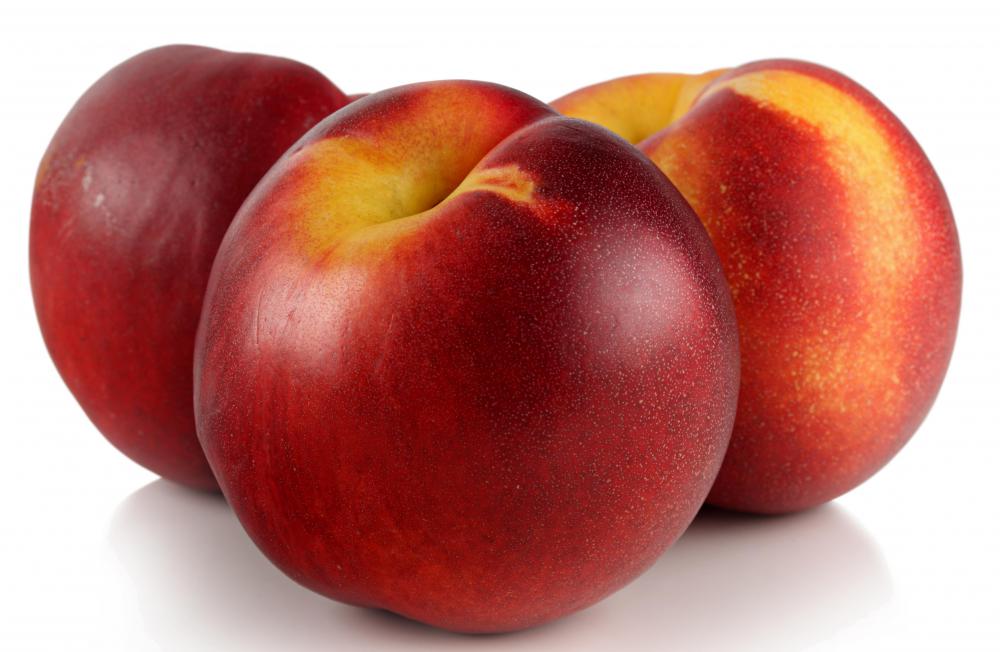At WiseGEEK, we're committed to delivering accurate, trustworthy information. Our expert-authored content is rigorously fact-checked and sourced from credible authorities. Discover how we uphold the highest standards in providing you with reliable knowledge.
What is Fructose Malabsorption?
Fructose malabsorption is the medical term for an inability to absorb fructose, or fruit sugar. The condition was formerly known as dietary fructose intolerance, and causes symptoms similar to lactose intolerance. Individuals with the disorder typically experience gastrointestinal discomfort when fructose is passed through the intestine instead of being absorbed by the body.
In most people, 25 to 50 grams (0.88 to 1.76 ounces) of fructose are absorbed by the small intestine in one sitting. Individuals with fructose malabsorption may absorb much less than this, which leads to fermentation and an increase in bacteria and yeast in the intestine. Common symptoms of fructose malabsorption include gas and bloating, abdominal discomfort, diarrhea or constipation, and nausea. In severe cases, hypoglycemia or fatty liver may result.

The condition is often misdiagnosed as lactose intolerance because the symptoms are so similar. A hydrogen breath test is usually employed for an accurate clinical diagnosis, and stool samples may also be taken. The breath test is a non-invasive procedure often used to diagnose patients with food intolerances.
During a hydrogen breath test for fructose malabsorption, the patient breathes into a tube and the doctor takes a base reading of the hydrogen in the breath. The patient is then required to consume a small amount of fructose and retake the test in 15 to 60 minute increments for as long as three hours. The doctor uses the readings from each test to decide if a patient is affected by the condition. In most cases, if the reading rises 20 parts per million (ppm) above the lowest reading, the patient will be diagnosed with fructose malabsorption. The excess hydrogen in the breath is caused by an overgrowth of intestinal bacteria, which is caused by the fructose that cannot be absorbed by the body.

Fructose malabsorption cannot be cured, but symptoms can be managed by dietary changes. Individuals diagnosed with the disorder should avoid foods that contain high amounts of fructose such as apples, pears, fruit juices, high fructose corn syrup, coconut, honey, watermelon and raisins. Soda, dried and canned fruits, sweet wine and products sweetened with sugar alcohols such as sorbitol or xylitol should also be avoided.

Although several fruits are off-limits to sufferers of the condition, there are many safe fructose malabsorption foods, including fruit such as peaches, plums, apricots, nectarines, blueberries, blackberries, strawberries, lemons, limes, bananas and pineapple. Each individual will be different, however, and some patients may not be able to tolerate the same foods as others. A food journal can be kept to monitor which foods cause symptoms and in what quantity. The foods that trigger discomfort can then be avoided.
AS FEATURED ON:
AS FEATURED ON:





















Discussion Comments
You *can* use glucose to help absorb the excess fructose (look up co-transport), but this is only up to an extent and it has to be consumed at the same time as the excess fructose or very shortly afterward. Once cramps have started, it's too late because the fructose has passed out of the small intestine (where it can be absorbed) and into the colon, where it is fermented. It's also not great for your blood sugar or teeth to do this very often.
As to FODMAPs, people with FM cannot consume foods high in fructose and fructans (which belong in the FODMAPs family). FODMAPs also include many other things, such as lactose, polyols and galactooligosaccharides. People with IBS have found the FODMAPs diet to be beneficial, and can generally re-introduce some foods after an elimination diet to see which foods specifically trigger their reactions.
People with purely FM (like me) can tolerate polyols (such as sorbitol) and GOS's etc but some have the broader IBS condition, which requires the full FODMAP diet. It's all up to individual tolerance levels. An elimination diet first will help you to discover exactly what you can and can't eat and in what amounts.
My sister has fructose malabsorption. When our friends hear about it, they think that she can never have anything sweet or any fruit. But this is not really true.
My parents found out about this when she was a child. In the beginning, she didn't have foods with fructose. But then my parents slowly started giving her small amounts of some fruits to see her tolerance.
It turns out that everyone has different tolerance levels, so there may be an amount that you are tolerant to. The trick is to have a little bit of fructose and then watch out for any symptoms for the next three days. Because it takes that long for the fructose to move through the system.
Using this method, my sis now knows which fruits and in which amounts she can tolerate. She still gets to taste them, just less than she would have normally.
I read that glucose helps fructose absorption. Is it possible for people with fructose malabsorption to have glucose along with fructose to help the condition? I think it would be great if this was possible.
What about fodmaps? Your list of safe fruits contains many that contain too much sorbitol.
Post your comments